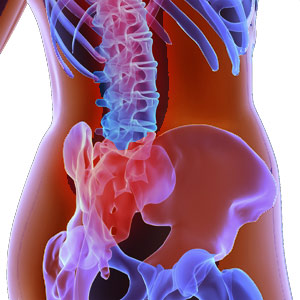Causes of Stomach Ulcers

It is popularly believed that spicy foods causes stomach ulcers but in fact it is a bacteria called H Pylori that is the main culprit. And while it is believed that generally adults in high stress jobs are those affected by ulcers, even children can develop ulcers.
The figures on stomach ulcers are startling. It is estimated that on an average about 20 million Americans develop at least one stomach ulcer during their lifetime. Stomach ulcer affects about 4 million Americans every year. More than 40,000 Americans undergo surgery because of persistent symptoms or problems from ulcers every year. About 6,000 Americans die of stomach ulcer-related complications every year.
What is a stomach ulcer?
A stomach ulcer, most commonly referred to as peptic ulcer, is a small erosion in the gastrointestinal tract. Ulcers are not contagious or cancerous. The size of the stomach ulcer may range from 1/8 of an inch to 3/4 of an inch.
The most common type - duodenal ulcer occurs in the first 12 inches of small intestine beyond the stomach. Ulcers of the stomach are called gastric ulcers. Duodenal ulcers are benign most of the times while stomach ulcers may get malignant.
Causes of stomach ulcers
Destruction of the gastric or intestinal mucosal lining of the stomach by hydrochloric acid is the cause of peptic ulcers. The hydrochloric acid is usually present in digestive juices of the stomach. Infection with the bacterium Helicobacter pyloricus (H pylori) plays a major role in causing both gastric and duodenal ulcers. H pylori bacteria infect more than a billion people worldwide. This infection usually persists for many years, leading to ulcer disease in 10% to 15% of those infected.
- H pylori may either be transmitted from one person to another or through contaminated food and water.
- Other causes of stomach ulcers are injury to gastric mucosal lining and weakening of the mucous defenses for gastric ulcers.
- Duodenal ulcers could be worsened by excess secretion of hydrochloric acid, genetic predisposition and psychological stress.
- Chronic use of anti inflammatory medications such as aspirin, ibuprofen, naproxen and etodolac and other non steroidal anti inflammatory drugs (NSAIDs) is another major cause.
- Cigarette smoking not only causes ulcer formation, but it also increases the risk of ulcer complications such as ulcer bleeding, stomach obstruction and perforation. Cigarette smoking is also a leading cause for ulcer medication treatment failure.
- There is no conclusive proof to suggest that life stresses or personality types contribute to ulcer disease, although stress and certain foods may aggravate an ulcer.
- It is recognized that some medical conditions can contribute to the development of ulcers. For instance, children with severe burns can develop ulcers secondary to the stress of their injuries. Infants who become septic or very ill with bacterial infection can also develop ulcers. Otherwise, in healthy kids, peptic ulcers are quite unusual.
Stomach ulcer symptoms
Signs and symptoms of ulcer disease are variable. However, the major sign and symptom of an ulcer is a burning or gnawing feeling in the stomach area that lasts between 30 minutes to 3 hours. This pain is often interpreted as heartburn, indigestion or hunger. The pain is usually felt in the upper abdomen or below the breastbone.
Some individuals experience pain immediately after eating. In some, the pain may not occur until a few hours after eating. The ulcer pain can awaken persons in the night. Weeks of pain may also be followed by weeks of no pain at all. Pain can be relieved by drinking milk, eating, resting or taking antacids.
There are instances of ulcer patients experiencing minimal indigestion and no discomfort at all. In some patients, there is persistent pain even after an ulcer is completely healed by medication. Others experience no pain at all even though ulcers do return.
Ulcers can come and go spontaneously without the individual even knowing about it unless a serious complication such as bleeding or perforation occurs.
Other symptoms of ulcer are loss of appetite and weight loss. Persons with duodenal ulcers may experience weight gain because these persons eat more to ease discomfort. Recurrent vomiting, black stool, blood in the stool and anemia are other symptoms.
Although peptic ulcer is rare in kids, it is imperative to see the doctor if the any of the following symptoms are noticed:
- Burning pain in the abdomen between breast bone and belly button
- Nausea
- Vomiting
- Chest pain/ dull ache
- Loss of appetite
- Burping and hiccuping quite frequently
- Weight loss
- Blood in vomit and feces
Though these signs and symptoms are common in most childhood illnesses, they do not necessarily indicate an ulcer. But it is essential to consult a doctor. After viewing the child's medical history and symptoms, the doctor may refer the child to a pediatric Gastroenterologist, for further evaluation and treatment.
Diagnosis of stomach ulcer
An upper gastrointestinal barium (GI) series may be done to get a close look at the gastrointestinal tract. An upper GI series is a set of x rays of the esophagus, stomach and duodenum. The barium upper GI x-rays are easy to perform and involve no risk or discomfort. Barium is a chalky substance administered orally. Barium is visible on x ray, and outlines the stomach on x ray film. However, barium x rays are less accurate and may not detect ulcers up to 20% of the time.
An upper Endoscopy may also be done if an ulcer is suspected. This procedure, performed under sedation involves inserting an endoscope, a small, flexible tube with a tiny camera on the end - down the throat and into the stomach and duodenum. This test lets the doctor view the lining of the esophagus, stomach and duodenum to check for possible ulcers, inflammation or food allergies.
Upper Endoscopy has an advantage of having the capability of removing small tissue samples or biopsies to test for H pylori infection. Biopsies can be examined under a microscope to exclude cancer. Virtually all duodenal ulcers are benign and gastric ulcers can get occasionally cancerous. Such biopsies help exclude cancer.
Tissue tests are performed to check for H pylori. The Endoscopy is sometimes used with a test called pH probe in which a small wire is inserted into the lower part of the esophagus to measure the amount of acid going into that area.
The H pylori test is important because treatment for an ulcer caused by H pylori is different from the treatment of an ulcer caused by NSAIDs. H pylori can be diagnosed through:
- Tissue test which is performed during an Endoscopy.
- Blood tests
- Stool tests, which can detect the presence of H pylori antigens. Stool tests are becoming more common for detecting H pylori and some doctors think that they are more accurate than blood tests.
- Breath tests can detect carbon broken down by H pylori after the patient drinks a solution. Breath tests are used mostly in adults.
Treatment for stomach ulcer
The good news is that H pylori related ulcers are curable. Treatment combines antibiotics and acid suppressor.
The primary goal of any treatment for ulcer is to relieve pain as well as prevent the complications of ulcer such as bleeding, obstruction and perforation. Therefore the first step of treatment involves reduction of risk factors such as NSAIDs and cigarettes and the second step is medication.
Antibiotics are normally taken over a period of two to three week period and antacids for nearly two months or even longer. Normally it takes two months for the ulcer to heal and it would take a few days or weeks for the pain to recede. To ensure that the ulcer has healed, a stool test is done to verify the absence of H pylori. If the symptoms persist or worsen, an Endoscopy follow up test is done 6 months to one year later to check for H pylori.
The treatment of ulcers due to NSAIDs often include surgery and usually improve with an acid suppressor and stopping or changing of the NSAID. There is no need to treat this type of ulcer with any antibiotics.
Since coffee stimulates gastric acid secretions and alcohol can cause gastritis, moderation in alcohol and coffee consumption is often recommended for adults.
Risks of developing stomach ulcer
- Family history of ulcers
- Smoking
- Consumption of alcohol to excess
- Nonsteroidal anti inflammatory medications usage
- Zollinger-Ellison syndrome
- Irregular and improper diet
- For duodenal ulcers, type O blood
- Although stress may not cause ulcer, it could be a contributing factor.
- Chronic disorders including liver disease, emphysema, rheumatoid arthritis may increase vulnerability to ulcers.
In the past, it was believed that having peptic ulcer meant living with a chronic condition for several years or even a lifetime. But today, with a better understanding of the cause of stomach ulcer and how to treat them, there is hope for most patients to be cured.
Yet interesting news on the subject is that a new yogurt that fights the bacteria causing gastritis and stomach ulcers which most researchers describe as almost vaccine-like effects, has been found by the scientists in Japan. It has been reported in the 237th National Meeting of the American Chemical Society.
This yogurt is already available in the store shelves in Japan, Korea and Taiwan. With this new yogurt, people can enjoy the taste of yogurt while preventing or eliminating the bacteria H pylori that cause stomach ulcers. Although, it is true that this yogurt appears less effective in reducing the levels of H pylori, it is a lot easier to take than medicine and can be eaten daily as part of regular dietary routine. There are not any apparent adverse side effects of this yogurt consumption.
Top of the Page: Causes of Stomach Ulcers
Tags:#stomach ulcers #stomach ulcers symptoms #stomach ulcer treatment #stomach ulcer diet #what causes stomach ulcers #treating stomach ulcers #diagnosing stomach ulcers
Causes of Stomach Ulcers
Abdominal Hernia
Internal Body Cleansing
Ulcerative Colitis
Irritable Bowel Syndrome
Acid Reflux Syndrome
Belly Bloat
Inflammatory Bowel Disease
Groin Hernia in Woman
Carcinoid
Colonoscopy Procedure
Bariatric Surgery
Hemorrhoids
Colon Cleansing
Other health topics in TargetWoman Women Health section:
General Women Health

Women Health Tips - Women Health - key to understanding your health ...
Cardiac Care
Women's Heart Attack Symptoms - Identify heart problems...
Skin Diseases
Stress Hives - Red itchy spots ...
Women Disorders
Endocrine Disorder - Play a key role in overall wellbeing ...
Women's Reproductive Health
Testosterone Cream for Women - Hormone replacement option ...
Pregnancy
Pregnancy - Regulate your lifestyle to accommodate the needs of pregnancy ...
Head and Face
Sinus Infection - Nearly 1 of every 7 Americans suffer from ....
Women and Bone Care

Slipped Disc - Prevent injury, reduce pain ...
Menstrual Disorders
Enlarged Uterus - Uterus larger than normal size ...
Female Urinary Problems
Bladder Problems in Women - Treatable and curable ...
Gastrointestinal Disorders
Causes of Stomach Ulcers - Burning feeling in the gut ...
Respiratory Disorders
Lung function Test - How well do you breathe ...
Sleep Management

Insomnia and Weight Gain - Sleep it off ...
Psychological Disorders in Women
Mood swings and women - Not going crazy ...
Supplements for Women
Women's Vitamins - Wellness needs...
Natural Remedies

Natural Diuretic - Flush out toxins ...
Alternative Therapy
Acupuncture Point - Feel the pins and needles ...
Top of the Page: Causes of Stomach Ulcers
Popularity Index: 101,468

